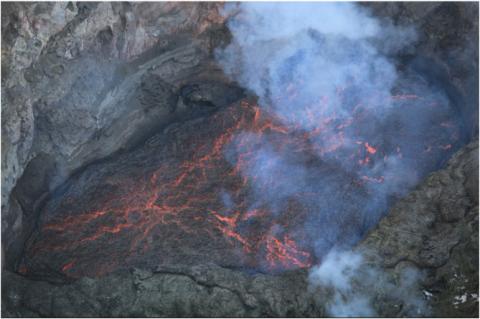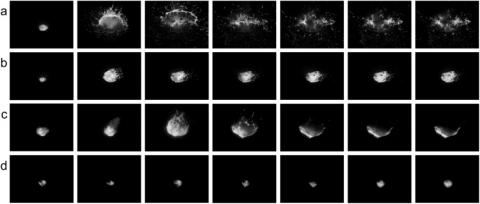KATC Meteorologist Jobie Lagrange visited Hamilton Hall to give a guest lecture about hurricanes for students in Int
Geology Graduate Student uses Machine Learning to automatically detect Strombolian eruptions
Tue, 05/26/2020 - 6:50pmBrian Dye, a Geology graduate student supervised by Dr G. Morra, just published a research paper on the first machine learning algorithm that automatically detects Strombolian eruptions in infrared images.
This is a fruit of the ongoing collaboration between the School of Geosciences and the Department of Physics at UL Lafayette.

Fig. 1 Photograph taken with a digital SLR camera in visible light spectrum of Ray lava lake. The length of the lava lake in this image is approximately 40 m. (Image is from Peters et al., 2014)

Fig. 2 Time sequence of 12 s with detection examples of: a – Typical large eruption detected by both seismic cross-correlation and the neural network; b – Small eruption detected by neural network as an eruption but not within seismic cross-correlation threshold; c – Plume obscured image likely causing missed eruption detection by the neural network but above seismic cross-correlation threshold; d – Plume caused false positive categorization as an eruption by the neural network.
The study has been published on Physics of the Earth and Planetary Interiors, a well established geophysics journal. The Open Access paper is freely available on Science Direct
